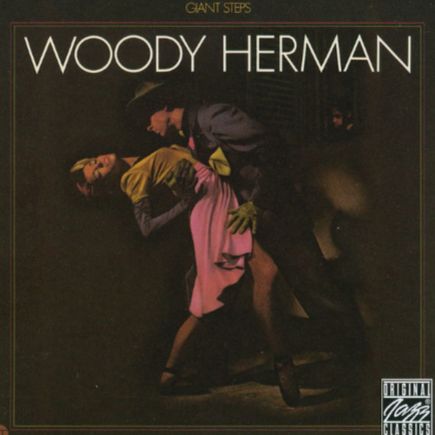Giant Steps: virtuosité fulgurante et révolution harmonique
Composée par John Coltrane en 1959 et enregistrée en 1960 pour l’album éponyme, Giant Steps constitue l’un des sommets de la création jazz du XXe siècle. Si Kind of Blue avait ouvert les voies du jazz modal en desserrant les contraintes harmoniques, Giant Steps, à l’inverse, pousse l’héritage du bebop à ses limites extrêmes, jusqu’à en redéfinir les fondations.
À la fin des années 1950, Coltrane se trouve à un moment charnière de son parcours. Il vient de quitter le quintet de Miles Davis, avec lequel il a participé à des enregistrements majeurs, et développe son propre langage musical, influencé par les recherches formelles du bebop, les expérimentations modales, et une quête spirituelle grandissante.
C’est dans ce contexte de transformation personnelle et artistique que naît Giant Steps, œuvre de rupture autant que de synthèse. Sa structure harmonique repose sur une série de modulations rapides et inattendues, connues sous le nom de Coltrane Changes, qui exigent une maîtrise exceptionnelle et une pensée musicale structurée, mettant au défi même les improvisateurs les plus aguerris.
Woody Herman, un hommage audacieux à Coltrane
Entre le 9 et le 12 avril 1973, à New York, Woody Herman enregistre avec son orchestre une version ambitieuse de Giant Steps, pour l’album éponyme. Plus de dix ans après la sortie de l’original de John Coltrane, Herman choisit de confronter son big band à l’un des défis harmoniques les plus redoutés du jazz moderne. Ce choix illustre la curiosité inlassable du clarinettiste et saxophoniste, toujours prêt à intégrer les innovations de ses pairs au langage orchestral.
L’arrangement met en lumière l’équilibre entre fidélité au modèle coltranien et ouverture vers l’univers du big band. La rythmique conserve l’élan vertigineux de la composition, tandis que les sections de cuivres et de saxophones amplifient la densité harmonique. Gregory Herbert et Frank Tiberi aux saxophones ténors, ainsi que le trompettiste Bill Stapleton, signent des interventions solistes qui témoignent d’une parfaite maîtrise des enchaînements rapides et des modulations abruptes caractéristiques de Giant Steps.
Giant Steps: virtuosismo fulgurante y revolución armónica
Compuesta por John Coltrane en 1959 y grabada en 1960 para el álbum homónimo, Giant Steps representa una de las cumbres de la creación jazzística del siglo XX. Si Kind of Blue había abierto las puertas del jazz modal al relajar las restricciones armónicas, Giant Steps, por el contrario, lleva el legado del bebop hasta sus límites más extremos, hasta redefinir sus fundamentos mismos.
A finales de la década de 1950, Coltrane atraviesa un momento crucial de su trayectoria. Acaba de dejar el quinteto de Miles Davis, con el que participó en grabaciones fundamentales, y comienza a desarrollar un lenguaje musical propio, influido por las exploraciones formales del bebop, las experimentaciones modales y una creciente búsqueda espiritual.
Es en este contexto de transformación personal y artística donde nace Giant Steps, una obra de ruptura tanto como de síntesis. Su estructura armónica se basa en una serie de modulaciones rápidas e inesperadas, conocidas como Coltrane Changes, que requieren un dominio excepcional y un pensamiento musical rigurosamente estructurado, desafiando incluso a los improvisadores más experimentados.
Woody Herman, un homenaje audaz a Coltrane
Entre el 9 y el 12 de abril de 1973, en Nueva York, Woody Herman grabó con su orquesta una versión ambiciosa de Giant Steps, para el álbum epónimo. Más de diez años después de la aparición del original de John Coltrane, Herman eligió confrontar a su big band con uno de los desafíos armónicos más temidos del jazz moderno. Esta elección refleja la inagotable curiosidad del clarinetista y saxofonista, siempre dispuesto a integrar las innovaciones de sus pares en el lenguaje orquestal.
El arreglo resalta el equilibrio entre la fidelidad al modelo coltraniano y la apertura al universo del big band. La sección rítmica mantiene el impulso vertiginoso de la composición, mientras que los metales y los saxofones amplifican su densidad armónica. Gregory Herbert y Frank Tiberi en los saxofones tenores, junto con el trompetista Bill Stapleton, firman intervenciones solistas que muestran un dominio absoluto de las rápidas progresiones y de las modulaciones abruptas características de Giant Steps.
Giant Steps: virtuosismo fulmineo e rivoluzione armonica
Composta da John Coltrane nel 1959 e registrata nel 1960 per l’album omonimo, Giant Steps rappresenta uno degli apici assoluti della creazione jazz del XX secolo. Se Kind of Blue aveva aperto la strada al jazz modale allentando i vincoli armonici, Giant Steps, al contrario, spinge l’eredità del bebop ai suoi limiti estremi, fino a ridefinirne le fondamenta.
Alla fine degli anni Cinquanta, Coltrane si trova in un momento cruciale del suo percorso artistico. Ha appena lasciato il quintetto di Miles Davis, con cui ha preso parte a registrazioni fondamentali, e sviluppa un linguaggio musicale personale, influenzato dalle esplorazioni formali del bebop, dalle sperimentazioni modali e da una crescente ricerca spirituale.
È in questo contesto di trasformazione personale e artistica che nasce Giant Steps, opera di rottura quanto di sintesi. La sua struttura armonica si basa su una serie di modulazioni rapide e inaspettate, conosciute come Coltrane Changes, che richiedono una padronanza tecnica eccezionale e un pensiero musicale rigoroso, mettendo alla prova anche gli improvvisatori più esperti.
Woody Herman, un omaggio audace a Coltrane
Tra il 9 e il 12 aprile 1973, a New York, Woody Herman registrò con la sua orchestra una versione ambiziosa di Giant Steps, per l’album omonimo. Più di dieci anni dopo l’uscita dell’originale di John Coltrane, Herman scelse di mettere il suo big band di fronte a una delle sfide armoniche più temute del jazz moderno. Questa scelta testimonia la curiosità instancabile del clarinettista e sassofonista, sempre pronto a integrare le innovazioni dei suoi pari nel linguaggio orchestrale.
L’arrangiamento mette in luce l’equilibrio tra la fedeltà al modello coltraniano e l’apertura verso l’universo del big band. La sezione ritmica conserva lo slancio vertiginoso della composizione, mentre le sezioni di ottoni e sassofoni ne amplificano la densità armonica. Gregory Herbert e Frank Tiberi ai sassofoni tenori, insieme al trombettista Bill Stapleton, firmano interventi solistici che rivelano una perfetta padronanza delle rapide progressioni e delle improvvise modulazioni caratteristiche di Giant Steps.
Giant Steps: blazing virtuosity and harmonic revolution
Composed by John Coltrane in 1959 and recorded in 1960 for the eponymous album, Giant Steps stands as one of the high points of twentieth-century jazz creation. While Kind of Blue opened the way for modal jazz by loosening harmonic constraints, Giant Steps, by contrast, pushes the bebop legacy to its furthest limits—ultimately redefining its foundations.
In the late 1950s, Coltrane found himself at a pivotal moment in his artistic journey. He had just left Miles Davis’s quintet, with whom he had recorded some landmark sessions, and was beginning to develop his own musical language, shaped by bebop’s formal innovations, modal experimentation, and an increasingly prominent spiritual quest.
It was within this context of personal and artistic transformation that Giant Steps was born—an act of both rupture and synthesis. Its harmonic structure relies on a sequence of rapid and unexpected modulations, known as the Coltrane Changes, which demand exceptional technical control and a highly structured musical mindset, challenging even the most seasoned improvisers.
Woody Herman, a bold tribute to Coltrane
Between April 9 and 12, 1973, in New York, Woody Herman recorded with his orchestra an ambitious version of Giant Steps for the eponymous album. More than a decade after the release of John Coltrane’s original, Herman chose to challenge his big band with one of the most daunting harmonic tests in modern jazz. This decision reflects the clarinetist and saxophonist’s relentless curiosity, always ready to weave the innovations of his peers into the orchestral language.
The arrangement highlights the balance between fidelity to the Coltrane model and openness to the big band universe. The rhythm section maintains the composition’s dizzying drive, while the brass and saxophone sections expand its harmonic density. Gregory Herbert and Frank Tiberi on tenor saxophones, along with trumpeter Bill Stapleton, deliver solo statements that demonstrate complete command of the rapid progressions and abrupt modulations characteristic of Giant Steps.


